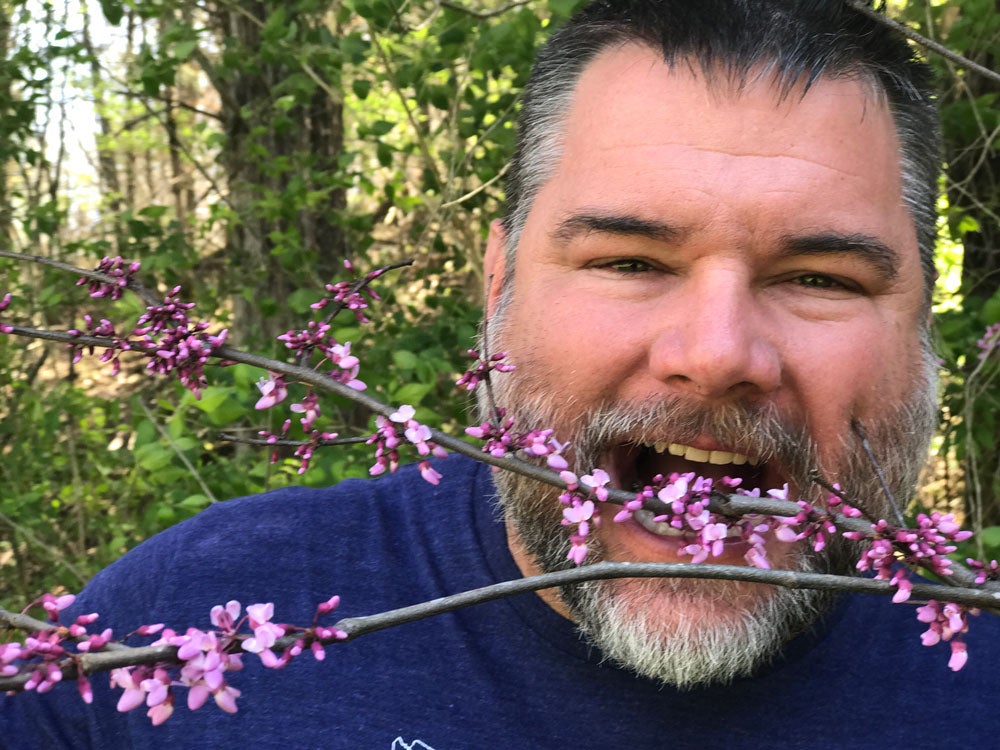CAUDILL: You’re the part of the environment that can protect it
Published 10:43 am Tuesday, May 5, 2020

- aig Caudill is a lifelong resident of Winchester and serves as Director of Nature Reliance School. He is author of Extreme Wilderness Survival and Ultimate Wilderness Gear. Please feel free to contact Craig at info@naturereliance.org or through any of the various social media platforms available.
|
Getting your Trinity Audio player ready...
|
The Greeks have a word, sympathea, that translates as mutual interdependence of all things past, present and future.
It is an interesting concept for sure, and I like the idea of it.
In today’s world, particularly here in our small town of Winchester, we do not seem to agree with the Greeks, do we?
In our country we have had it so good for so long we have forgotten what it was that got us here.
Look at the state motto that appears on the Kentucky flag: “United we stand, divided we fall.”
It is there for a reason. We worked together to get this far.
I am pondering that as I relate the message of how to consider the environment, the great outdoors, in a time and place where we are divided.
Can you remember the last time there was a big beautiful moon, and it caught your eye? I mean you saw it and thought, “That thing looks huge!”
The moon can surprise us like that sometimes. Keep in mind that your enemy, the guy/gal that disagrees with everything you say, the person whose way of life is morally opposed to your own, is also looking at the same moon. They are also living on this same rock we call Earth with you.
They may be having the same thoughts as you.
One of my favorite quotes says, “If you don’t stand for something, you will fall for anything.” A quick Google search will show it’s difficult to attribute the source of that little nugget of wisdom.
I first heard it in drafting class at George Rogers Clark High School in 1986 in a John Cougar Mellencamp song.
I think of that shareable wisdom as it relates to outdoors enjoyment and education.
As I write this, Earth Day 2020 has passed, and that always gives me a reason to pause and consider the world in which we live.
Earth Day, much like its young and similar protégé’, the Leave No Trace movement, tends to be more of a list of “don’ts” as it relates to the environment. A do-not-do-this, do-not-do-that sort of thing.
We humans are part of the environment. Wildlife, trees and herbaceous plants are sometimes good on the environment and sometimes bad.
For those who think all wild things are good, you should really investigate calery pear trees, wild hogs, winter creeper and other invasive species. These are a part of the environment that are incredibly detrimental to a healthy ecosystem here in Kentucky.
Human animals are no different.
Some of our species have a positive effect, and others have negative one.
We are an advanced species in many ways. Unlike other critters, we can use the neocortex that we now have for cerebral thought to work towards positively effecting the environment.
Here are a few ways this is being done around us on a large scale: Farmers often use no-till methods that help increase soil quality, workers across the state (me included) eradicating bush honeysuckle and winter creeper, and hunters that keep wild game numbers in check based upon wildlife biologists’ recommendations.
All of these are examples of ways many of us who are involved daily in environmental concerns are doing what we can to be good stewards of the land.
There are other simple way we can get involved in to actively participate.
Every time you throw something “away” consider if it is something you can reuse. It is worth it to consider where “away” is. When we do remove trash and throw it away, it is not really doing anything other than going somewhere else.
I am no different than many here in Clark County who were disappointed to learn it was not feasible to continue recycling pickup. Recycling is still available on a smaller scale, but we should seriously consider purchasing stuff we do not have to throw away in the first place. That includes your grocery bags. Take your own re-usable bags to the store.
Seeding is another way to positively interact with the environment.
You can learn some plants and the optimal time they are seeding naturally, and help them along.
Dandelions are a perfect example. Most often, they take care of themselves, but you can get some healthy food and help them along the way at the same time.
When you see they have formed a white head, pull off the stem and use it for salad or a tea infusion, after blowing the seeds about. You will not make many friends with your neighbors, but quite frankly, I do not take suggestions from those who poison the ground.
I am thankful our local parks, probably out of budget concerns, do not spend a lot of money on eradicating weeds with herbicides, especially dandelions. Dandelions are all-around great plants to have in your yard for yourself and the environment.
You are a part of the environment, and the part of it that can use your noggin to think ahead and see how we are affecting our “nest.”
I would rather us keep the nest clean and tidy.
Last time I looked around, birds do not typically crap in their own nest.
I hope to see you on or off the trail sometime soon.
Craig Caudill is a lifelong resident of Winchester and serves as director of Nature Reliance School. He is the author of “Extreme Wilderness Survival,” “Ultimate Wilderness Gear” and “Essential Wilderness Navigation.” He can be reached at info@naturereliance.org or through any of the various social media platforms available.





